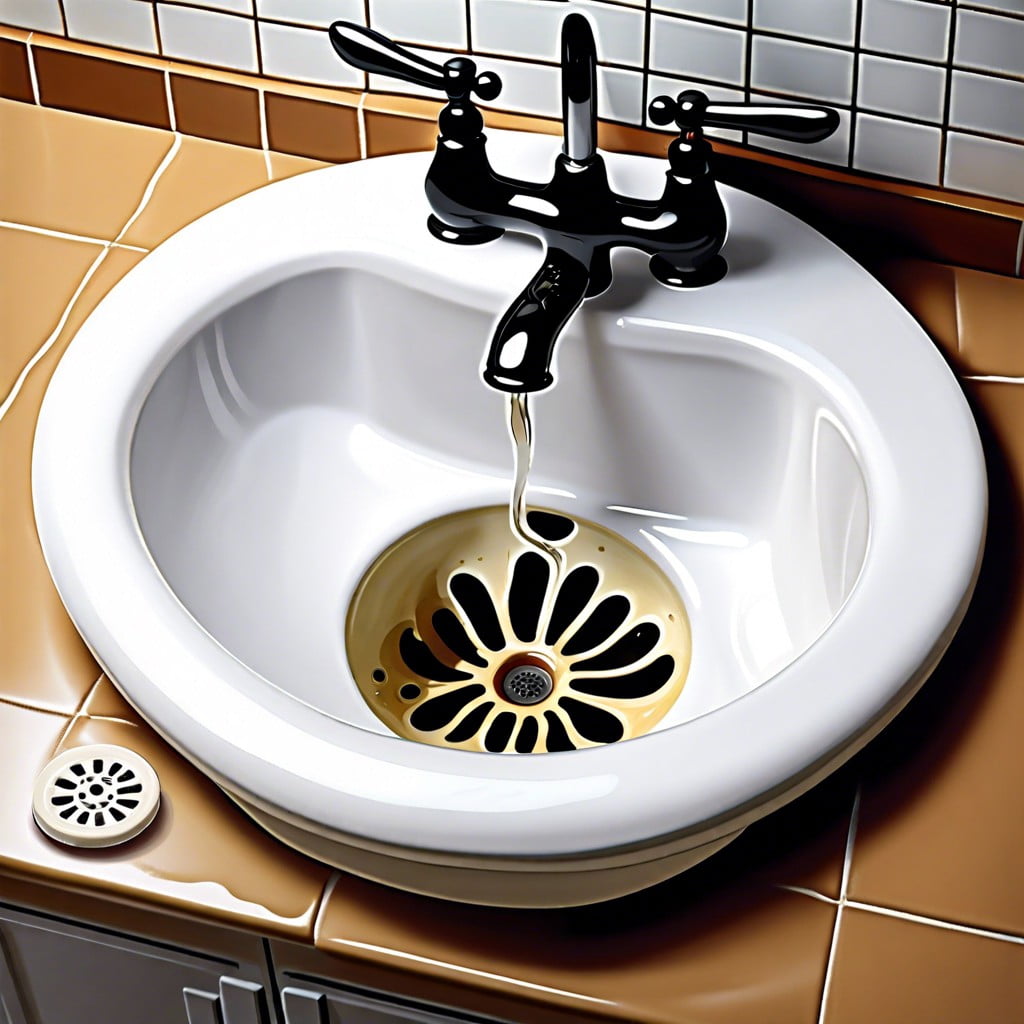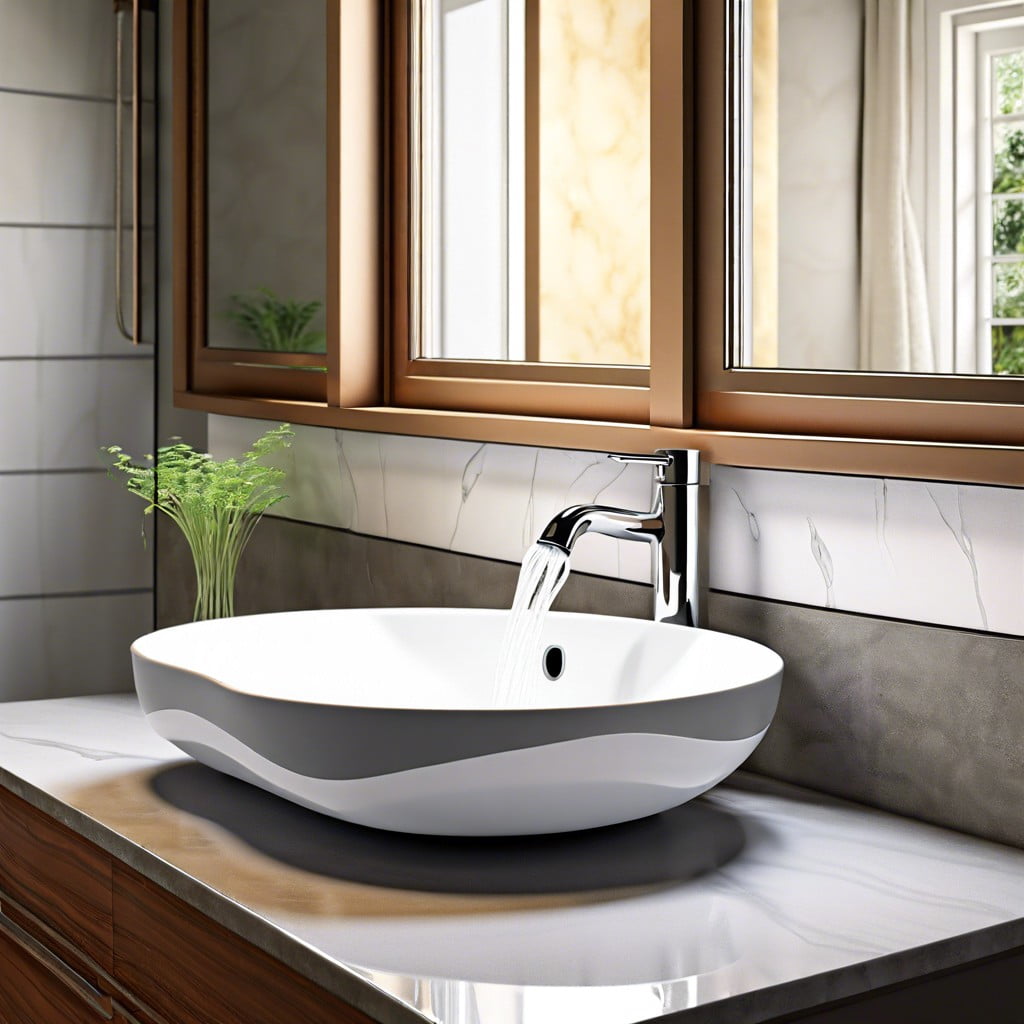Last updated on
Discover the common causes and effective solutions for eradicating sewage smells in your bathroom.When confronted with the foul odor of sewage in a bathroom, it often indicates a deeper issue at play than merely unpleasant aromas—it’s a sign that something in the plumbing system isn’t functioning correctly. The usual suspects include dried-out water traps, clogged vents, loose or broken seals, or a malfunction in the sewer line itself. Each of these problems requires a particular approach; for instance, a dry P-trap simply needs water to restore the barrier against gas, while a broken seal might require replacing a toilet’s wax ring.Critically, regular maintenance is your best defense against sewage smells. Ignoring the issue can lead to more significant and costly repairs down the line. Homeowners should regularly check for leaks, ensure vents are clear, and could consider installing a water trap under sinks to prevent future problems.The concept of “out of sight, out of mind” proves perilous in plumbing. Sewage smells are not only offensive, but they also pose health risks due to the potentially harmful gases like methane that can seep into living spaces. The problem may seem inconsequential at first glance, but the presence of a sewage odor is an urgent call to action to preserve both the integrity of your home’s infrastructure and the health of its occupants.Traditional solutions often overlook the potential environmental impact. It’s essential to approach sewage smell issues with a consideration for the environment—using harsh chemicals as a quick fix is an antiquated practice that ignores the long-term consequences. Instead, sustainable methods and materials should be prioritized.It’s high time that the stigma of ‘bathroom talk’ is flushed away. Open conversations around sewage odor can lead to more informed and proactive approaches in addressing this common household issue. Silence on the subject only breeds negligence; therefore, a shift towards transparency can catalyze better maintenance habits among homeowners.In essence, sewage smell in a bathroom is a clear indication that attention is needed, and with a methodical approach, it can be solved effectively and sustainably.
Key takeaways:
- Dry P-trap Restoration and Water Refill
- Troubleshooting Vent Pipe Functionality
- Addressing Bacteria and Biofilm in Drains
- Professional Solutions for Persistent Sewer Odor Issues
Dry P-trap Restoration and Water Refill
A P-trap is the U-shaped bend under your sink and fixtures, holding water to form a barrier against sewage gases. But if a bathroom isn’t used regularly, the water in a P-trap can evaporate, eliminating this crucial barrier. This is a common, yet often overlooked, cause of bathroom odors.
To restore the P-trap, simply run water in the sink, shower, and bathtub for a few minutes. This allows the traps to refill and block the foul smells. Additionally, pouring a tablespoon of cooking oil into the drain after water can slow down the evaporation process, providing a longer-term fix for seldom-used bathrooms.
For a proactive approach, routinely flush water through infrequently used fixtures to maintain the water seal in the P-trap, ensuring a consistent defense against sewer odors. This simple habit is an easy and effective safeguard to keep your bathroom fresh.
Troubleshooting Vent Pipe Functionality
Vent pipes, the unsung heroes of plumbing, ensure that sewer gases have a one-way ticket out of your home. When they’re blocked, a domino effect ensues: pressure imbalance occurs, traps lose their water seals, and voilà, the smell invites itself in.
First, consider a simple visual inspection at the vent outlet on the roof. Look out for obvious blockages such as bird nests or debris.
Next, listen for gurgling sounds after flushing. This can indicate a vent struggling to perform due to partial clogs or obstructions.
Don’t overlook the possibility of a cracked vent pipe. Even a small fracture allows odors to seep through.
For those entrenched in urban jungles, checking vent pipes post-construction in nearby sites is prudent. They can inadvertently affect your plumbing.
If your DIY inspection raises more questions than answers, a smoke test performed by professionals can reveal hidden faults in the vent system.
Taking these steps not only helps nip the foul odor in the bud but also maintains the health of your entire plumbing system.
Addressing Bacteria and Biofilm in Drains
The presence of bacteria and biofilm in drains can be a sneaky culprit for unpleasant odors in your bathroom. These are not just signs of poor cleaning habits; they’re natural results of waste and moisture meeting the hospitable environment of your pipes.
Biofilm is a collection of microorganisms that adhere to the surfaces inside your drain, creating a slimy layer that can trap odors and foster bacteria growth.
Here’s the reality: Eradicating this biofilm is akin to hitting the reset button on your drainage system’s cleanliness. Hot water alone won’t do the trick – it’s often about creating an environment where these organisms can’t thrive. Using a non-corrosive enzymatic cleaner, which breaks down organic matter without damaging plumbing, can be an effective strategy.
Pouring boiling water is a simple and widely suggested method, but it’s a temporary fix at best. It may kill off some bacteria, but unless you’re dealing with the problem at the source, you’ll find yourself back at square one.
Remember, tackling biofilm is not an assault but a strategic battle. Regular maintenance using the right products is like keeping the peace in your pipeline world, preventing biofilm from becoming the unwelcome guest in your bathroom.
Professional Solutions for Persistent Sewer Odor Issues
When the issue isn’t resolved by DIY methods, calling in professionals is key.
Plumbers bring advanced tools and techniques to diagnose issues beyond the reach of the average homeowner.
Video inspection equipment can reveal blockages or cracks in sewer lines that may not be apparent during a cursory examination.
Expertise in pressure testing can pinpoint precisely where gases are escaping the system.
Furthermore, professional enzymatic treatments offer a deeper clean than over-the-counter solutions, addressing odor-causing bacteria more effectively.
For recurring problems, they might suggest installing a backwater valve, which can prevent sewage from re-entering the home.
Trust the proficiency of the professionals to tackle the persistent sewer odor and provide peace of mind with long-term solutions.
Continue reading:
Recap


